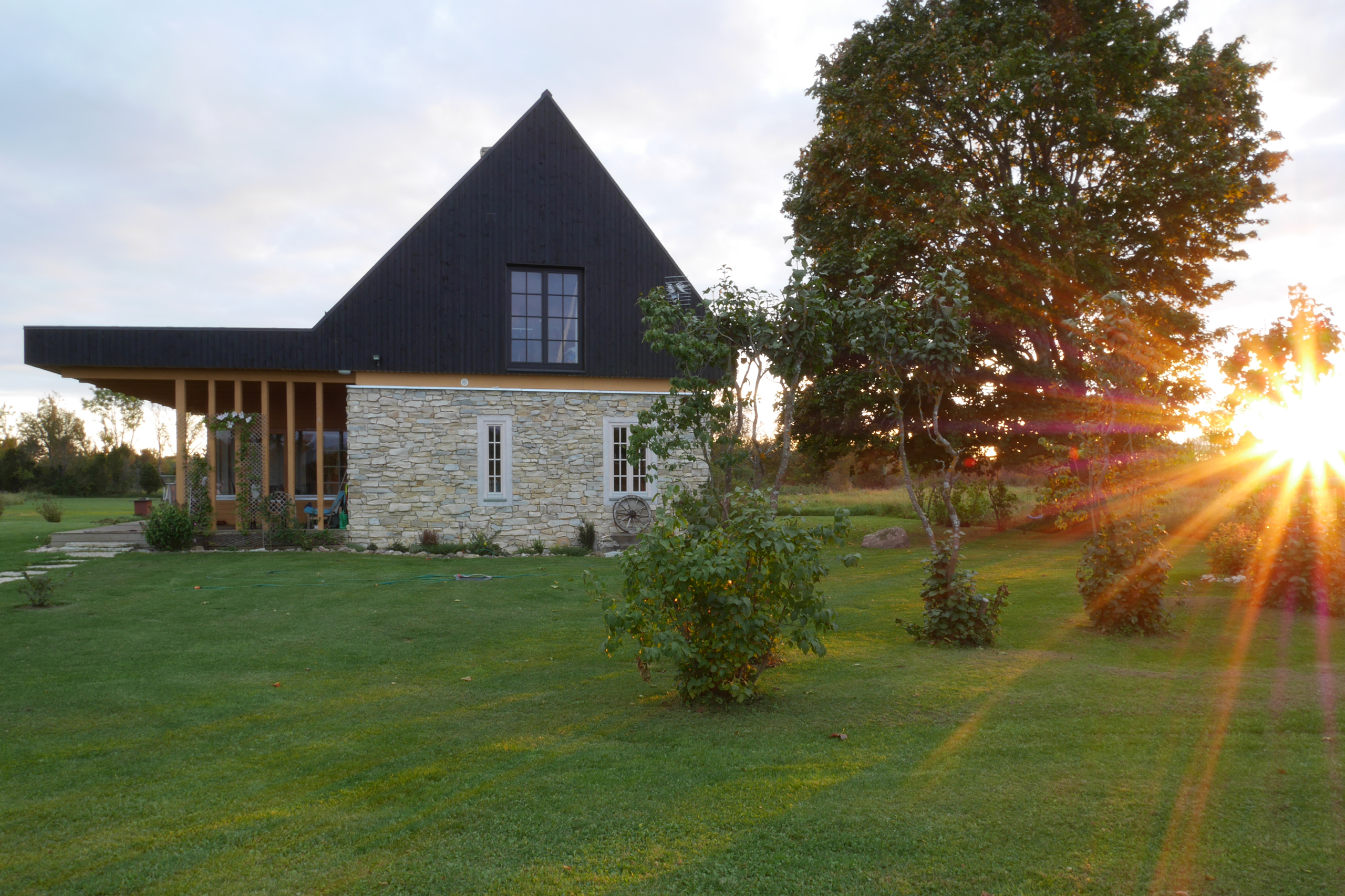
Hoolimata sellest, et 1939. aastal kasutusele võetud klassikaline viilkatusega elamu oli oma aja ära elanud, oli osa konstruktiivsest skeletist hästi säilinud ning seetõttu sai rekonstrueerimise aluseks säilitada maksimaalses ulatuses hoone vaoshoitud mahuline isikupära. Teisalt oli ambitsioon siduda elamu arhitektuurne lahend krundi dekoratiivseima ja jõuliseima elemendi – paekivist vareme ansambliga. Tulemuseks teravmeelse viilkatusega põhimaht, mille esimene korrus on kivine ja hele ning teine korrus puidune ja tume. Juurde liidetud kaldkatusega veranda osa loob õdusa ja avara lisaväärtuse.
Despite the fact that the classic house with a pitched roof, which was commissioned in 1939, had outlived its time, part of the constructive skeleton had been well preserved, and therefore the reconstruction was based on preserving the restrained volume of the building to the maximum extent. On the other hand, the ambition was to combine the architectural solution of the house with the most decorative and powerful element of the plot – the ensemble of limestone ruins. The result is a main volume with a sharp pitched roof, the first floor of which is rocky and light and the second floor wooden and dark. The attached part of the veranda with a sloping roof creates a cozy and spacious added value.
Martin Kinks, Risto Parve, Kai Süda, Margit Valma
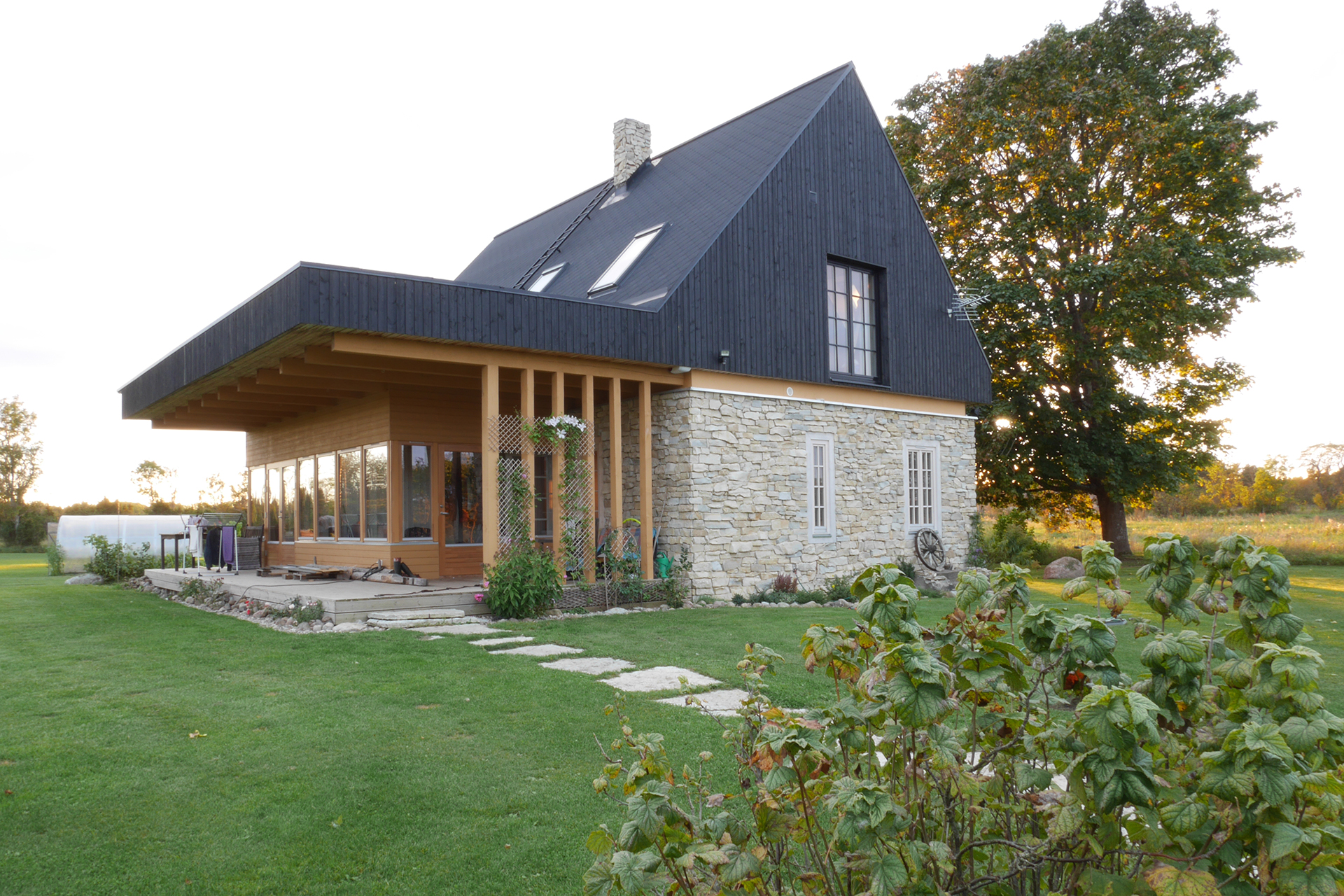
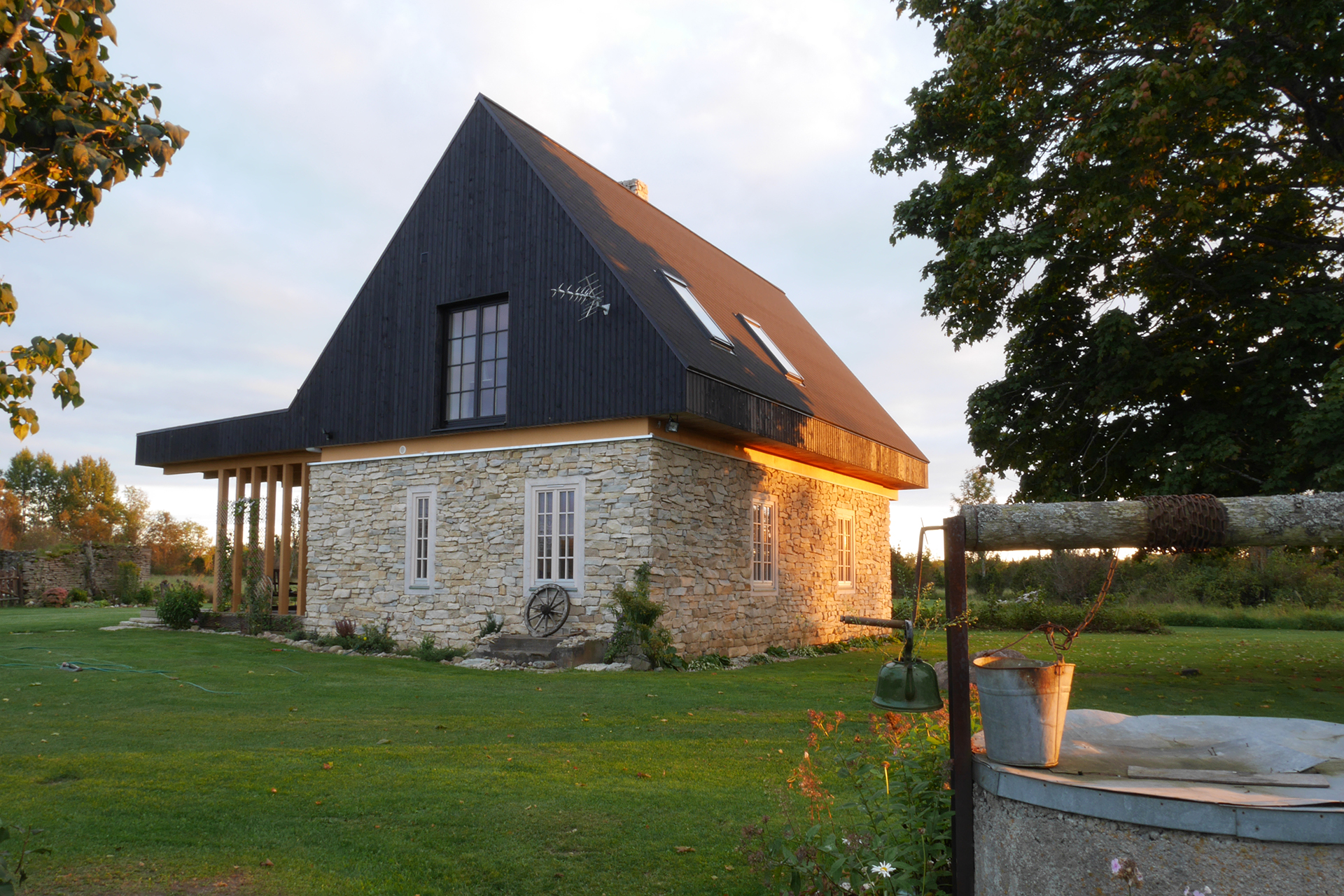
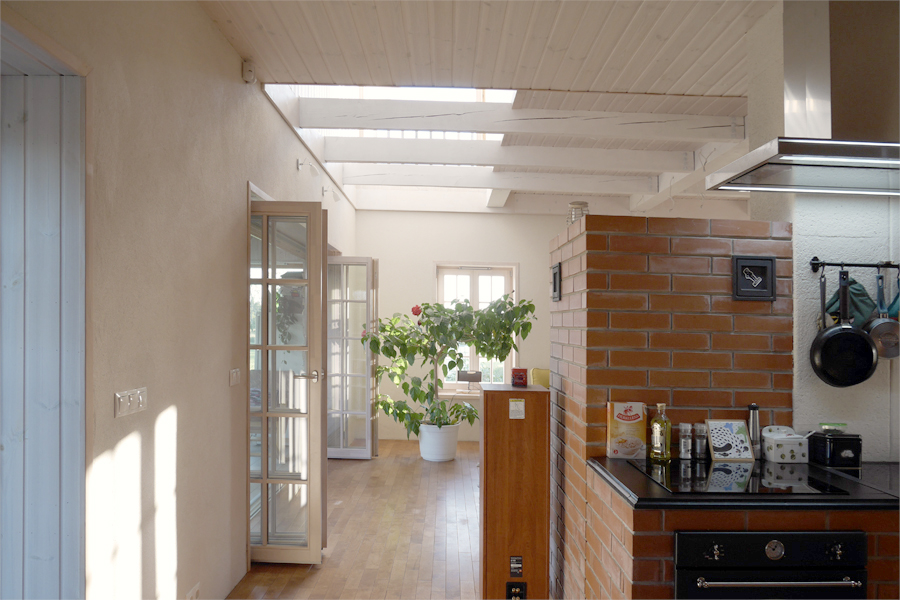
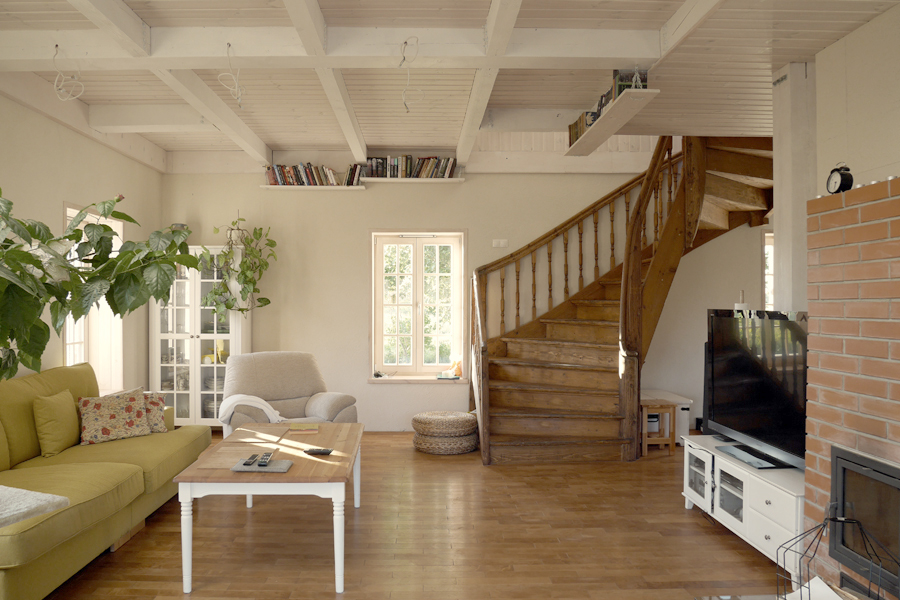
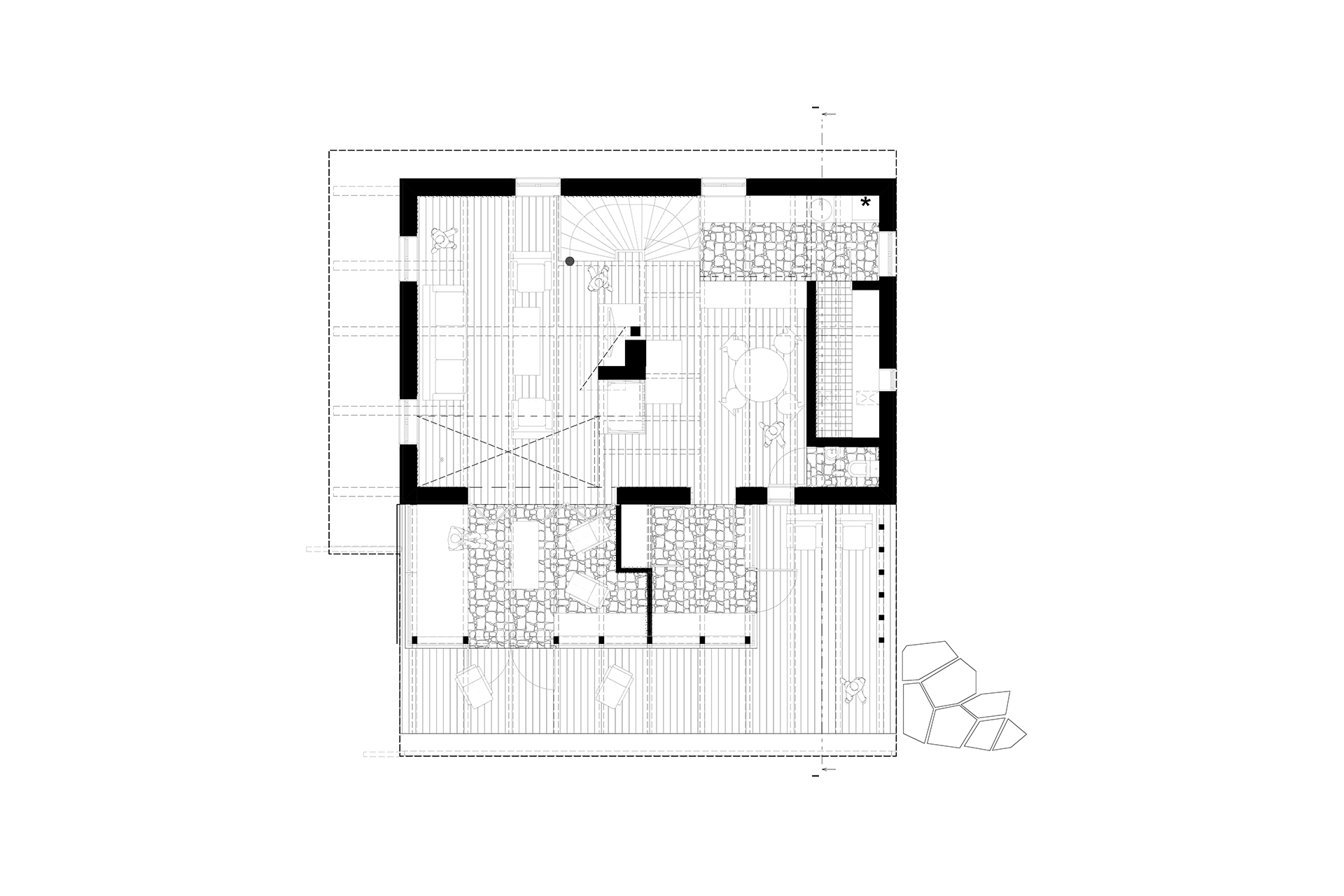 1. Korrus / Ground Floor
1. Korrus / Ground Floor
 Katusekorrus / Attic Floor
Katusekorrus / Attic Floor

